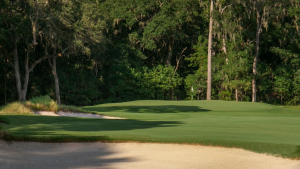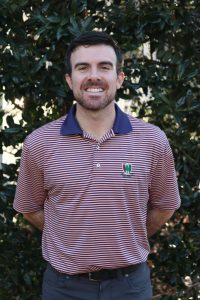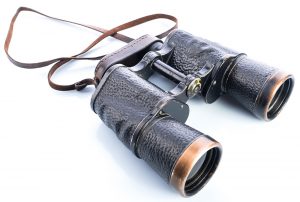WEDNESDAY, MAY 2, 2018
Photo: The third hole at the Chechessee Club in South Carolina, which was identified as a favorite place to play by two of our staff.
Like fishermen who find a lonely section of stream that yields a delightful bounty on the fly, golfers delight in coming across unheralded courses that can be played for a relative dime, challenge every club in the bag, appeal to the eye, and provoke the question: Do I dare start telling others about this place? We asked our staff to share such gems they’ve discovered through the years. Not headliner courses, but rather favorites that you don’t heard talked about so much. Some of these courses lie away from the big city boundaries, while others are darkened by the shadows of nearby masterpieces, such as Alister Mackenzie’s Pasatiempo. We hope you like our list—and get to play some of these places yourself.
Jeffrey Cranford
Ironwood South
Ironwood, a private club, is located in Palm Desert, California. The South Course regular hosts local qualifying rounds for the US Open.
Bill Euler, SW Texas Region Director
Beechwood Golf Club
Beechwood, a public course, is located in LaPorte, Indiana. It is a traditional course designed in the 1930s by William Diddle, who designed more than 300 courses while maintaining a game so strong that he shot his age more than 1,200 times, including a 74 at the Country Club of Naples, Florida, when he was 86!
Drew Hamilton, North Texas Region Director & Marty Jacobus, California Desert Region Director
Chechessee Creek Club
Chechessee Creek Club, a private club, is located in Okatie, South Carolina. Chechessee is a low country design of Bill Coore and Ben Crenshaw, who also designed the much-talked about Trinity Forest course that will be the new host of the Byron Nelson classic later this month on the PGA Tour.
Tracy Hanson, Women’s Ministry Coach
Hayden Lake Country Club
Hayden Lake, a private club, is located in Hayden Lake, Idaho, Tracy’s home state.
Jeff Hopper, Chief Organizational Officer
DeLaveaga Golf Course
DeLaveaga, a municipal course, is located in Santa Cruz, California, right around the bend from Mackenzie’s famed Pasatiempo and across the bay from the Monterey Peninsula. DeLaveaga’s tenth may be the most challenging risk-reward par-5 you’ll ever play.
Bob Kuecker, Boston Area Representative
Laytonsville Golf Course
Laytonsville, a public course, is located in Gaithersburg, Maryland. A shorter course, tipping out at just under 6,400 yards, you’ll find Laytonsville to be an enjoyable loop.
Josh Nelson, Atlanta Area Representative
Ansley Golf Club – Settindown Creek Course
Ansley Golf Club is 106-year-old private club in Atlanta. The club offers a wonderful nine-hole option at is Midtown Course, but it is Settindown Creek that has hosted the US Women’s Amateur and the Nike Tour Championship.
Randy Wolff, South Central Region Director
Pine Dunes
Pine Dunes, a public course rated as best in Texas by Golfweek magazine, is located in Frankston, Texas. On-site accommodations can sleep 58 people, so it’s a great venue for a golf retreat.
Dereck Wong, Southern California/Las Vegas Region Director
Monterey Park Golf Club
Monterey Park Golf Club, a public course located in Monterey Park, in the heart of the Los Angeles metroplex. The nine-hole, par-29 course is coupled with a large two-tiered practice range.


